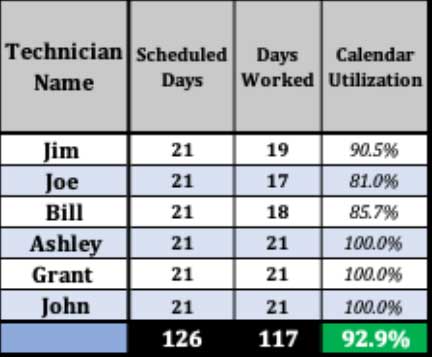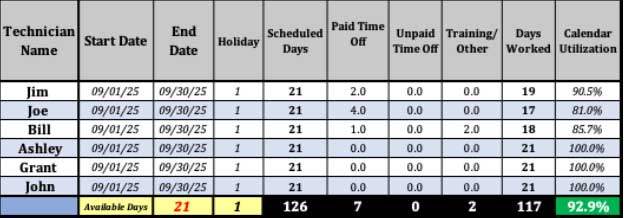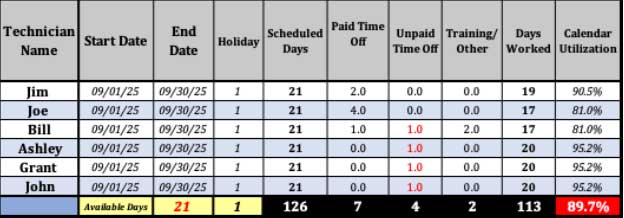There is a penalty in football called “too many men on the field”. It’s enforced when one team has more than eleven players on the field. Having more than eleven players would give one team an unfair advantage over another, therefore is There is a penalty in football called “too many men on the field.” It’s enforced when one team has more than eleven players on the field. Having more than eleven players would give one team an unfair advantage over another, so it is not allowed.
But what happens when the team has fewer than eleven? Is there a penalty then? The answer is no. The team is already penalizing itself by not having the maximum number of players on the field.
Staffing levels in our business have always been a topic of discussion. We are often asked, “How many Advisors should we have?” or “How many Technicians do we need?” I would challenge you to ask two different questions:
- How many Technicians are scheduled today?
- How many of them are here today?
One thing our company recommends is to track Technician attendance. We call it calendar utilization. In short, the formula is days worked vs. days scheduled. Here’s a basic example:

So how do you improve this number? To do that, we need to dive a little deeper. Let’s use the same scenario but with more details.

- In this example, we used the period of one month, which included a holiday, so our Technicians are scheduled to work 21 days.
- Jim, Joe, and Bill used paid time off.
- Bill attended two days of training.
Consider this: shops with long-term employees may have more paid time off. Shops could also have several Technicians that need to attend training. These are all factors to consider before comparing your percentage.
The elephant in the room is unpaid time off or any other unscheduled reason for missing work. In the example above, we have a total of seven paid days off. But what if another four days of unpaid time was added?
Our clients are usually shocked to find out that unpaid time off is often not tracked. Worse yet, it’s sometimes used instead of paid time off.
Consider this: if a Technician goes home at 8:30 a.m. because they are not feeling well, does your manager log that as unpaid time off? If a Technician takes the day off to go to a dentist appointment, is that time tracked? If school is closed and the Technician stays home to watch their child, is that time off noted?
Let’s say we log four days of unpaid time off. How does that affect your calendar utilization? Look below—it drops by 3.2%.

Most shops don’t adjust their schedules when a Technician misses work. Not to mention, any carryovers will wait until that Technician returns. In a ten-Technician shop, a decrease of 2% in calendar utilization can cost the average shop $3,000 to $4,000 a month in parts and labor gross profit.
I’m not advocating against allowing Technicians to take time off. What I’m challenging you to do is measure it. Only after you measure something can you determine whether your changes improve anything.
Who knows? You may consider offering a bonus to Technicians who have a calendar utilization over a certain percentage. Or what if Technician rates are increased when they have perfect attendance?
My daughter gets an award for perfect attendance at school. Maybe Technicians should get one too.
Elevate your Fixed Operations department with our custom-tailored solutions. Our team offers in-depth assessments and specialized training programs, crafting strategies designed specifically to boost efficiency, maximize customer retention, and ensure long-term profitability. We’ll work closely with you to identify areas for improvement and implement targeted solutions that drive sustainable growth for your business.